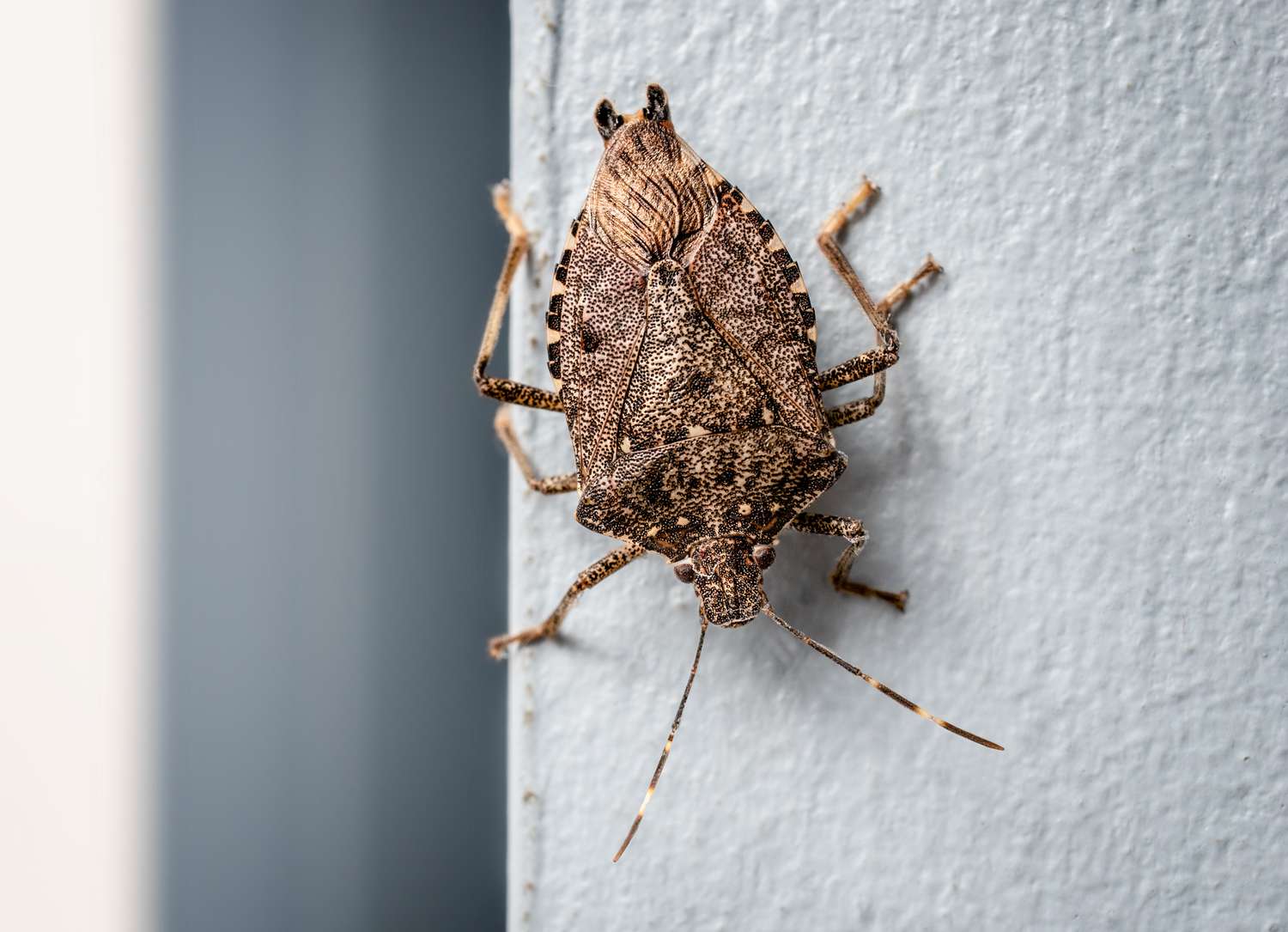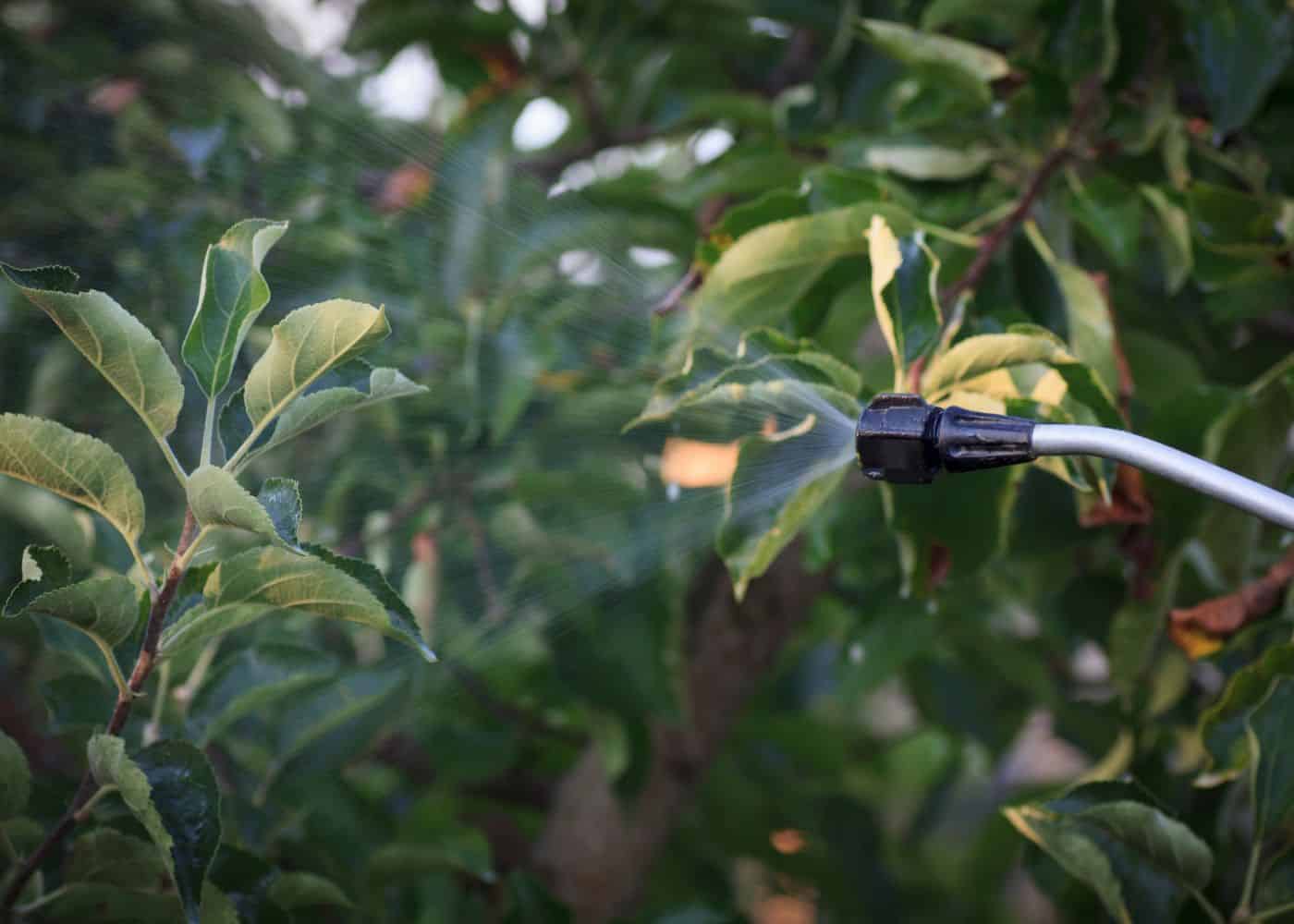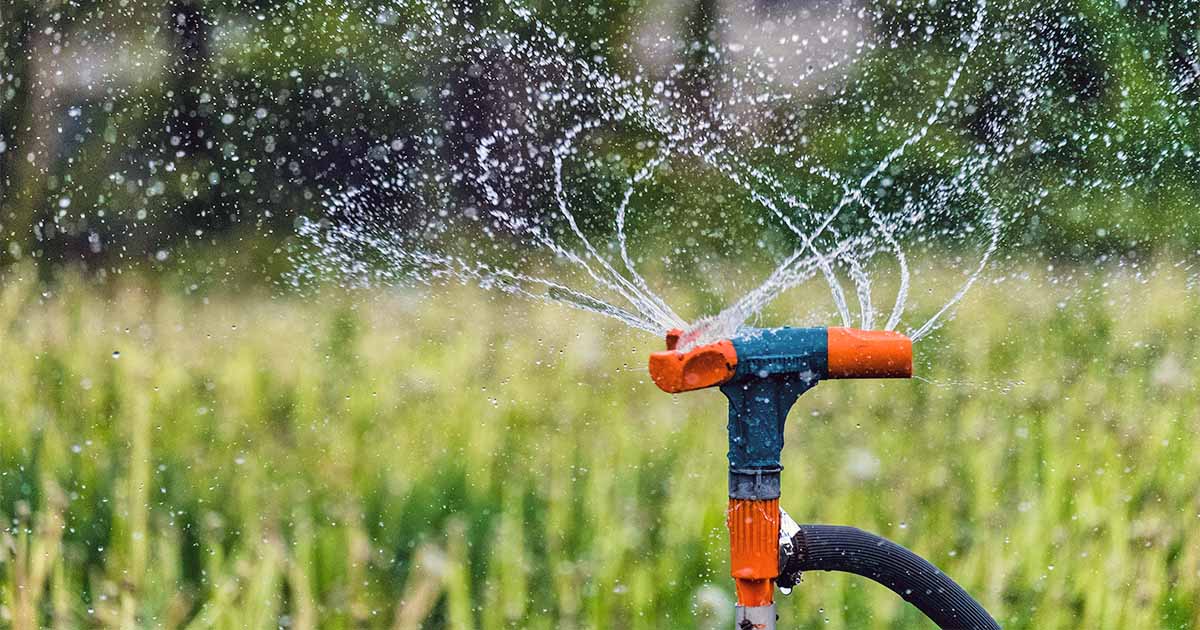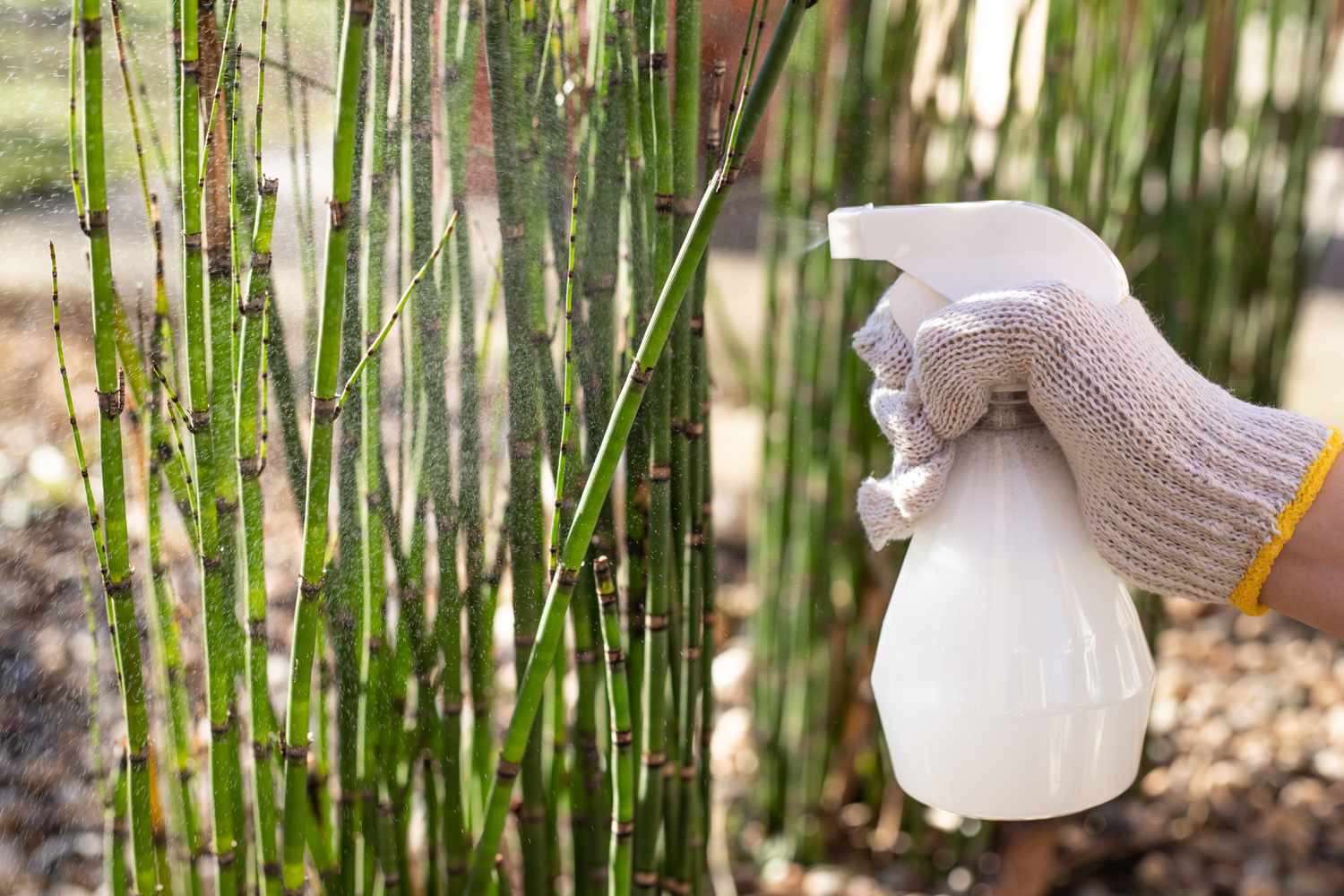Home>Gardening Tips and Tricks>Problem Solving>How To Spray For Weeds


Problem Solving
How To Spray For Weeds
Modified: January 22, 2024
Learn effective ways to solve weed problems with our expert tips on how to spray for weeds. Say goodbye to pesky weeds with our proven methods.
(Many of the links in this article redirect to a specific reviewed product. Your purchase of these products through affiliate links helps to generate commission for Chicagolandgardening.com, at no extra cost. Learn more)
Table of Contents
Introduction
Welcome to the battle against weeds! Dealing with pesky invaders in your garden or lawn can be a daunting task, but fear not – with the right knowledge and techniques, you can reclaim your green spaces and keep them thriving. In this comprehensive guide, we will delve into the art of weed spraying, covering everything from understanding the types of herbicides to mastering application techniques. By the end of this journey, you will be equipped with the expertise to tackle weeds effectively and prevent their unwelcome return.
As any seasoned gardener will attest, weeds are relentless adversaries that can quickly overtake an otherwise flourishing landscape. Their ability to compete for resources and choke out desirable plants makes them a formidable foe. However, with the right approach, you can regain control and maintain a vibrant, weed-free environment.
Whether you are a novice gardener or a seasoned green thumb, understanding the intricacies of weed spraying is essential for preserving the health and beauty of your outdoor spaces. Join us as we explore the nuances of herbicide selection, preparation, application, and post-spraying care, empowering you to effectively combat weeds and nurture flourishing gardens and lawns.
Understanding Weed Spraying
Before delving into the practical aspects of weed spraying, it is crucial to grasp the fundamental principles underlying this essential gardening practice. Weed spraying, also known as herbicide application, involves the targeted use of chemical substances to control or eradicate unwanted plant species. These substances, known as herbicides, are designed to disrupt specific biological processes within plants, ultimately leading to their demise.
It is important to recognize that not all herbicides are created equal. They can be broadly categorized into two main types: selective and non-selective herbicides. Selective herbicides are formulated to target specific types of plants while leaving others unharmed. This precision makes them ideal for controlling weeds in lawns and gardens without causing harm to desirable vegetation. On the other hand, non-selective herbicides are designed to eliminate a wide range of plant species and are commonly used in areas where complete vegetation control is necessary, such as driveways, sidewalks, and gravel paths.
Understanding the life cycle and growth habits of common weeds is also pivotal in devising an effective weed spraying strategy. By familiarizing yourself with the characteristics and growth patterns of prevalent weed species in your area, you can tailor your approach to maximize effectiveness. Additionally, recognizing the optimal timing for weed spraying based on the growth stage of the target weeds can significantly enhance the impact of herbicide application.
Furthermore, it is essential to exercise caution and responsibility when using herbicides. Adhering to recommended application rates, following safety guidelines, and considering environmental implications are integral parts of responsible weed spraying. By adopting a conscientious approach, you can mitigate potential risks and ensure the well-being of your garden ecosystem.
Choosing the Right Herbicide
When it comes to weed spraying, selecting the appropriate herbicide is a critical decision that can significantly impact the success of your efforts. With a myriad of herbicide options available, each tailored to specific weed control needs, understanding the key factors that influence your choice is essential.
First and foremost, consider the type of weeds you are targeting. Different herbicides are formulated to combat specific types of weeds, such as broadleaf weeds, grassy weeds, or perennial weeds. By identifying the predominant weed species in your garden or lawn, you can narrow down your options and choose a herbicide that effectively targets the problem plants while minimizing impact on desirable vegetation.
Another crucial consideration is the formulation of the herbicide. Herbicides are available in various formulations, including liquid concentrates, ready-to-use sprays, and granular formulations. Each formulation offers distinct advantages in terms of application convenience, coverage, and targeted use. For instance, liquid concentrates provide flexibility in dilution ratios and are suitable for large-scale applications, while ready-to-use sprays offer convenience for smaller, targeted treatments.
Environmental impact and safety should also guide your herbicide selection. Opt for herbicides that are labeled as environmentally friendly and pose minimal risk to non-target organisms. Additionally, prioritize herbicides with clear application guidelines and safety precautions to safeguard both your health and the surrounding ecosystem.
Furthermore, consider the persistence and residual effects of the herbicide. Some herbicides break down rapidly after application, posing minimal risk of long-term soil or water contamination, while others exhibit prolonged residual activity. Understanding the persistence of the herbicide can inform your approach to subsequent plantings and maintenance activities in treated areas.
Lastly, familiarize yourself with any legal restrictions or regulations pertaining to herbicide use in your region. Certain herbicides may be subject to specific usage guidelines or restrictions, necessitating compliance with local regulations to ensure responsible and lawful application.
Preparing for Weed Spraying
Effective weed spraying begins long before the herbicide is applied. Adequate preparation is pivotal to ensuring the success of your weed control efforts and minimizing the potential for unintended consequences. From assessing weather conditions to preparing the application equipment, a thorough and meticulous approach sets the stage for optimal results.
Prior to initiating weed spraying, assess the weather forecast to identify an optimal window for application. Ideally, choose a day when the weather is calm, with minimal wind and no precipitation expected. These conditions promote uniform herbicide coverage and minimize the risk of drift, which can lead to unintended damage to non-target plants.
Next, evaluate the condition of the target area to be sprayed. Remove any debris, such as fallen leaves or branches, that may obstruct herbicide application or interfere with the absorption of the herbicide by the weeds. Additionally, consider mowing the area to ensure a uniform height, facilitating consistent herbicide coverage and absorption.
Calibrating and preparing the application equipment is a critical step in the weed spraying process. Whether you are using a handheld sprayer, backpack sprayer, or larger equipment, ensure that it is clean, well-maintained, and calibrated to deliver the appropriate herbicide concentration and coverage. Proper calibration prevents under- or over-application, optimizing the effectiveness of the herbicide while minimizing waste.
Protective measures for both the applicator and non-target organisms should not be overlooked. Prior to spraying, don appropriate personal protective equipment, including gloves, goggles, and long-sleeved clothing, to safeguard against herbicide contact. Furthermore, take precautions to shield desirable plants from herbicide exposure by covering them with plastic sheeting or employing specialized shields to prevent overspray.
Finally, familiarize yourself with the specific application guidelines provided by the herbicide manufacturer. Carefully read and adhere to the recommended application rates, mixing instructions, and safety precautions outlined on the herbicide label. By meticulously preparing for weed spraying, you can set the stage for precise, effective application while minimizing the potential for adverse effects on the surrounding environment.
Application Techniques
Mastering the art of weed spraying demands a nuanced understanding of effective application techniques. By employing the right methods and approaches, you can maximize the impact of herbicide application while minimizing the risk of unintended consequences. From application timing to spray coverage, each aspect plays a pivotal role in the success of your weed control endeavors.
Timing is of the essence when it comes to herbicide application. Optimal timing is often dictated by the growth stage of the target weeds, with some herbicides proving most effective when applied during specific developmental phases. For instance, targeting broadleaf weeds during their active growth stages, when they are actively translocating nutrients, can enhance herbicide uptake and efficacy.
Uniform spray coverage is essential for achieving consistent results. Whether using a handheld sprayer, backpack sprayer, or mechanized equipment, strive to maintain a consistent application height and speed to ensure even distribution of the herbicide. Overlapping spray patterns and employing a systematic approach can help prevent gaps in coverage and ensure that all targeted weeds receive an adequate dose of the herbicide.
Adhering to recommended application rates is crucial for optimizing weed control while minimizing the risk of herbicide runoff or leaching. Avoid the temptation to exceed the prescribed herbicide concentration, as this can lead to unnecessary environmental impact and potential harm to non-target plants. Diligently following the specified application rates is key to achieving the desired weed control outcomes.
Consider the surrounding environment when applying herbicides. Take care to avoid spraying during windy conditions to prevent herbicide drift, which can carry the chemical beyond the intended treatment area and potentially harm non-target vegetation. Additionally, be mindful of adjacent water bodies and take precautions to prevent herbicide runoff into streams, lakes, or other aquatic habitats.
Post-application cleanup and decontamination are often overlooked but essential aspects of responsible weed spraying. Thoroughly clean and rinse application equipment after use to prevent herbicide residue from inadvertently contaminating future applications or non-target areas. Properly dispose of leftover herbicide solutions and adhere to local regulations regarding herbicide container disposal.
By mastering these application techniques and approaches, you can elevate the effectiveness of your weed spraying efforts while upholding environmental stewardship and responsible herbicide use.
Post-Spraying Care
After completing the weed spraying process, diligent post-spraying care is essential to ensure the desired outcomes and maintain the health of your garden or lawn. From monitoring the treated area to implementing measures to prevent weed resurgence, proactive post-spraying care plays a crucial role in the long-term success of your weed control efforts.
Following herbicide application, monitor the treated area closely to assess the effectiveness of the treatment. Observe the targeted weeds for signs of herbicidal activity, such as wilting, discoloration, or stunted growth. This monitoring period allows you to gauge the initial response of the weeds to the herbicide and make informed decisions regarding the need for additional treatments or follow-up measures.
While herbicides are effective at controlling existing weeds, they may not prevent the emergence of new weed growth. Implementing cultural practices, such as mulching, regular mowing, and promoting healthy turf or plant growth, can complement herbicide applications by creating an environment that inhibits weed establishment and growth. Additionally, addressing underlying soil health and nutrient imbalances can bolster the resilience of desirable plants, reducing the likelihood of weed encroachment.
Proper disposal of herbicide containers and leftover solutions is a critical aspect of post-spraying care. Adhere to local regulations and guidelines for the disposal of herbicide containers, ensuring that they are properly rinsed and discarded in accordance with environmental best practices. Avoid pouring leftover herbicide solutions down drains or into water bodies, as this can lead to environmental contamination.
Refrain from disturbing the treated area immediately following herbicide application. Avoid mowing, tilling, or engaging in activities that may disrupt the herbicide-treated vegetation for the specified period recommended by the herbicide manufacturer. Allowing the herbicide to take full effect undisturbed enhances its efficacy and contributes to long-lasting weed control.
Finally, document the details of the herbicide application, including the type of herbicide used, application rates, and dates of treatment. Maintaining accurate records enables you to track the efficacy of specific herbicides, identify trends in weed control, and make informed decisions for future weed management strategies.
By conscientiously attending to post-spraying care, you can fortify the impact of your weed control efforts, foster a healthy and resilient landscape, and minimize the likelihood of weed resurgence.
Conclusion
As we conclude our journey through the realm of weed spraying, it is evident that a multifaceted approach is essential for effective weed control. From understanding the intricacies of herbicide selection to mastering application techniques and post-spraying care, each phase of the process plays a pivotal role in achieving lasting weed management outcomes.
By delving into the nuances of weed spraying, you have acquired a deeper appreciation for the art and science of herbicide application. Armed with the knowledge of selective and non-selective herbicides, application techniques, and post-spraying care, you are well-equipped to navigate the challenges of weed control with confidence and precision.
It is crucial to approach weed spraying with a blend of expertise and conscientiousness. By prioritizing environmental stewardship, adhering to recommended application practices, and embracing a holistic approach to weed management, you can safeguard the vitality of your garden or lawn while effectively combating invasive weeds.
As you embark on your weed spraying endeavors, remember that responsible herbicide use is paramount. Always prioritize safety, environmental considerations, and compliance with local regulations to ensure that your weed control efforts are aligned with sustainable and ethical practices.
With a comprehensive understanding of weed spraying and a commitment to responsible application, you are poised to transform your outdoor spaces into thriving, weed-free havens. Embrace the art of weed spraying as a means to nurture and protect the beauty of your garden or lawn, and let your newfound expertise pave the way for a landscape teeming with vibrant, healthy vegetation.




